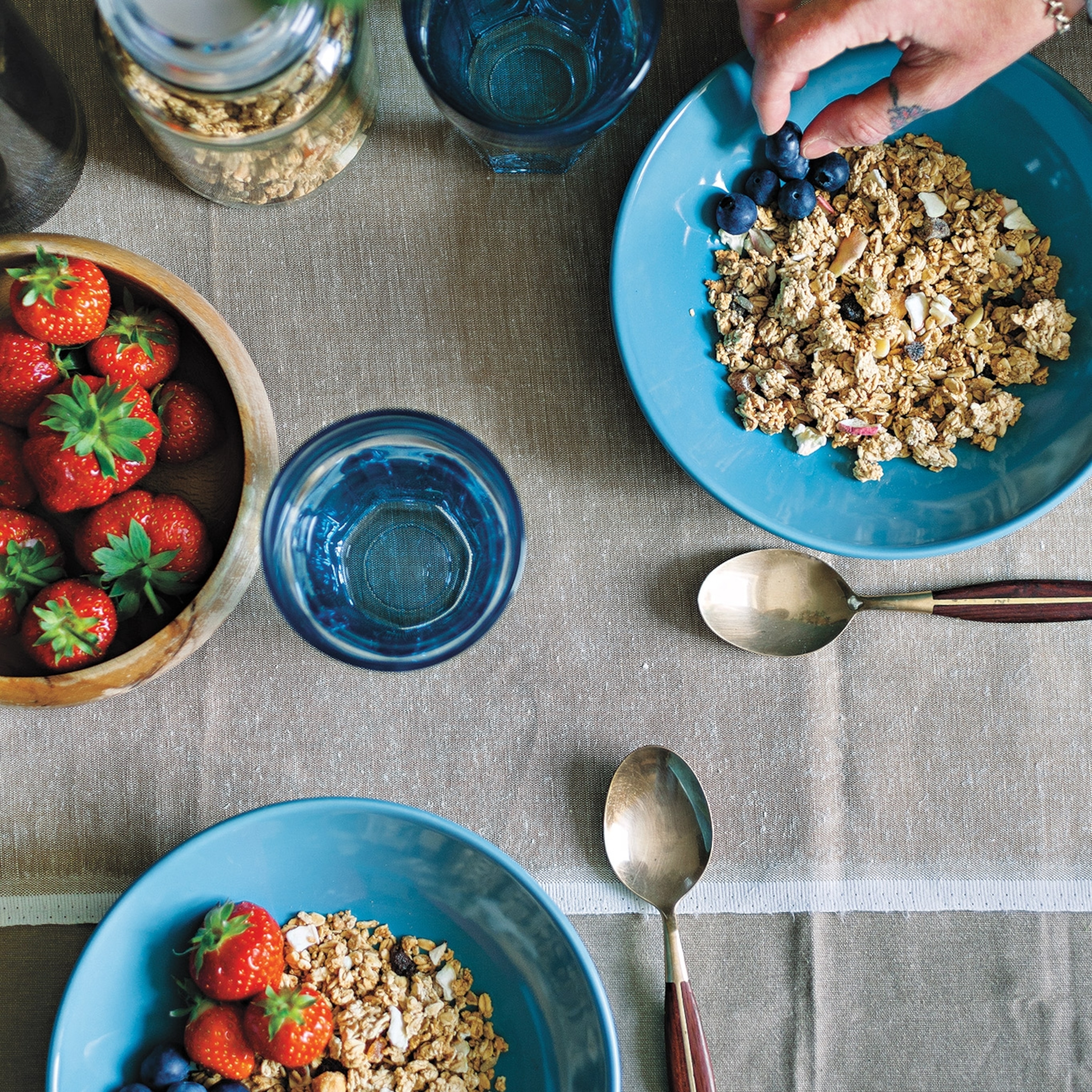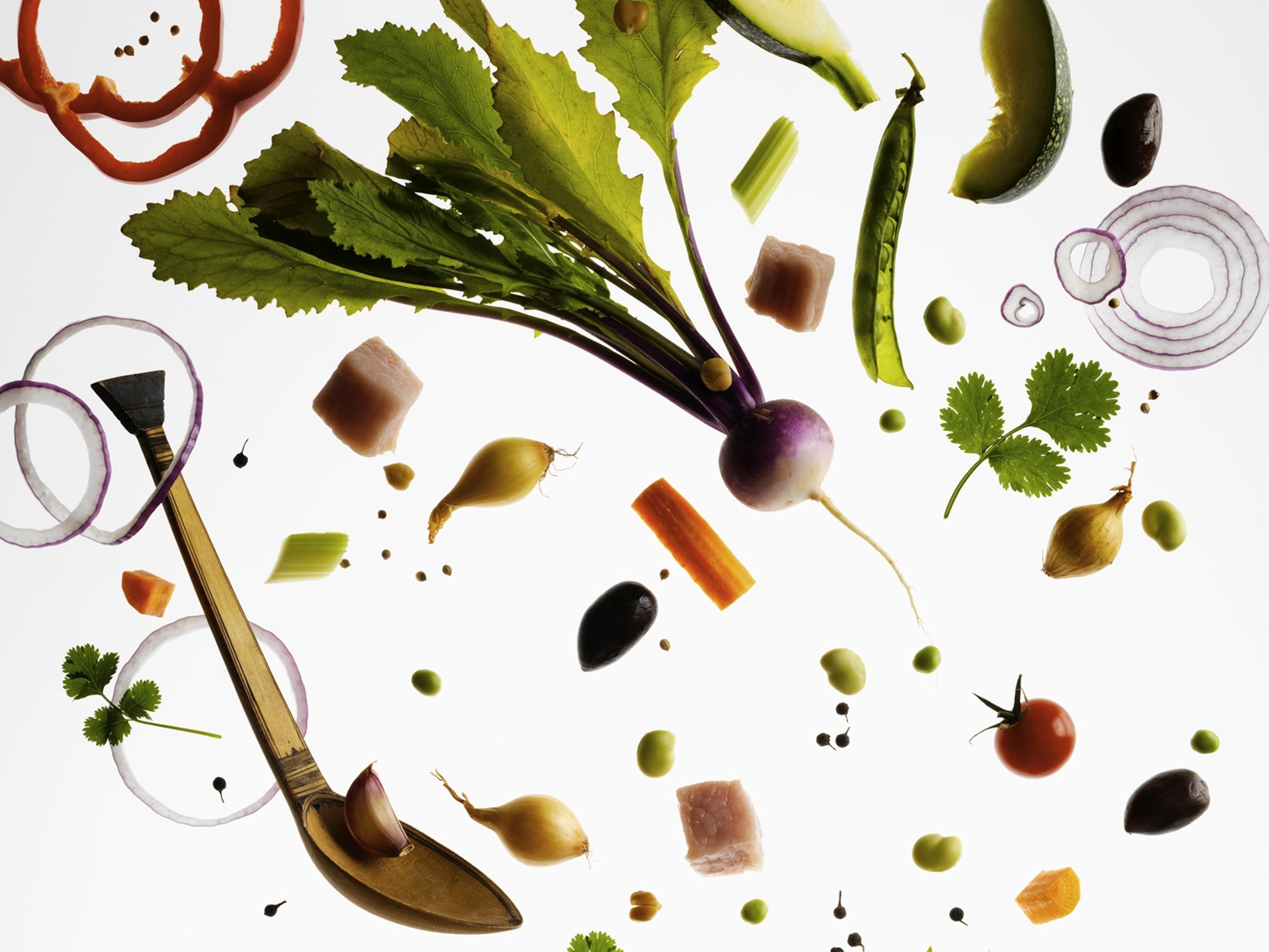
How do you create your own ‘Blue Zone’? Here are 6 tips
From prioritizing breakfast to allowing yourself to indulge, these small changes recommended by author Dan Buettner can help improve your overall well-being.
These six powerful food practices create a virtuous circle between food, healthy social networks, moving naturally, strong spiritual life, and overall well-being. Try incorporating them into your daily routine and create your own personal “Blue Zone”—a place to live your longest, healthiest life.
(The 5 'Blue Zones' where the world’s healthiest people live.)
Make it sacred
Knowing which foods to eat—and in what quantities—is the first step toward eating to 100. But there’s more that we can learn from people in the Blue Zones about food. For them, growing, preparing, serving, and eating are all sacred practices with the power to bring their families, their homes, their communities, their beliefs, and the natural world together in daily rhythms and harmonies. After watching how Blue Zones principles can come to life in North American communities, I’ve zeroed in on six powerful food practices that create a virtuous circle between food, healthy social networks, moving naturally, strong spiritual life, and overall well-being. Here they are, along with a few thoughts on how you can put them into practice in your own home too.
Breakfast like a king
An Adventist adage reminds people to eat “breakfast like a king; lunch like a prince; dinner like a pauper.” In other words, make the first meal of your day the biggest, and eat only three meals per day. The routine is the same in almost all of the Blue Zones: People eat a huge breakfast before work, a mediumsize late lunch, and a light, early dinner. They may occasionally grab a midmorning piece of fruit or a midafternoon handful of nuts, but most don’t make a habit of snacking. The average meal contains about 650 calories, so with just three meals a day and a small snack, most people get all the calories a day they need. Adding a fourth meal, even a small one, can push your calorie consumption over the top for the day. Most food is consumed before noon. Nicoyans often eat two breakfasts and a light dinner. Lunch tends to be the big meal for Ikarians and Sardinians. Okinawans like to skip dinner altogether. Many Adventists who follow the “breakfast like a king” rule eat only two meals a day, one midmorning and another around 4 p.m. Recent research supports frontloading calories early in the day.
Take control of ingredients
For the most part, people in the world’s Blue Zones eat at home. In most Blue Zones, eating out is considered a celebratory event, a rare treat usually reserved for a wedding or other festive occasion. When you cook at home, you can control the ingredients. You can choose the freshest, highest-quality ingredients and avoid consuming cheap fillers and flavor enhancers that end up in much restaurant food. (Even high-end restaurants typically pile on butter and salt.) Cooking also nudges you into action, requiring you to stand, stir, mix, knead, chop, and lift. All of this physical activity counts more than you know, especially when compared with sitting down at a restaurant. One study followed the eating habits and caloric intake of 1,000 people for a week and discovered that people who ate out consumed on average about 275 more calories per day than people who ate at home. Why? Restaurants serve meals containing more calories. This may not sound like much, but by most estimates, just 200 extra calories per day could add up to as much as a 20-pound gain over the course of a year.

Get back on track with a fast
Devout Catholic Sardinians and Nicoyans fast during Lent, the 40 days before Easter, during which time they abstain from meat. Studies show that occasionally going without food, even for a day, can provide health benefits. It can recalibrate insulin release, giving the pancreas a break. It can temporarily lower cholesterol and blood pressure. It works as a short-term way to lose weight, break food addictions, and perhaps even cleanse the digestive tract. Moderate fasting for longer periods can create a form of caloric restriction and may slow aging. Fasting puts the cells in our bodies into a survival mode, with at least two benefits. First, cells produce fewer free radicals, the oxidizing agents that “rust” our bodies from the inside out. Lower levels of free radicals strengthen arteries, brain cells, and even the skin. Second, fasting also seems to reduce levels of insulin-like growth factor 1 (IGF-1), a hormone important for cell growth but potentially dangerous after about age 20, as high levels may promote prostate, breast, and other cancers.
(Is organic food healthier? That’s the wrong question.)
Indulge a little
None of these rituals should feel like a restriction, limitation, or deprivation. Don’t cheat yourself. Go ahead and enjoy the good meals and the occasional indulgent celebration. We eat about 1,100 meals a year. If we celebrate a couple of times a week and enjoy what we love to eat, that still leaves almost 1,000 meals a year to eat the Blue Zones way. “What dieters forget is that eating is one of the greatest pleasures of the living,” said Antonia Trichopoulou, arguably the greatest living expert on the Mediterranean diet. If it makes you happy, don’t give up that slice of pie at Thanksgiving, or that piece of birthday cake, or even that weekly steak. It may not be optimally healthy, but as residents of the Blue Zones have shown us, the body has some capacity to equalize after an occasional indulgence. The trick is to painlessly find that happy balance between savoring our lives and behaving in a way that saves them for the longest possible time. In our world, those two forces are at odds, but in the Blue Zones, those two forces harmonize. So go ahead and indulge in the occasional celebration.

Make meals a time to share
Mealtimes in the Blue Zones are a time to give thanks, share stories, talk out problems, and bond as a family. As a rule, people there never eat alone, never eat standing up, and never eat with the other hand on the steering wheel. As my Ikarian guide Thea Parikos pointed out, when her family sits down to a meal, she leaves the stress of the day elsewhere. Ikarians, she said, eat slowly while holding conversations with family, a ritual good for building not only stronger family ties but also healthier bodies. How you eat can be as important as what you eat. Eating fast promotes overeating and, as research shows, can double your risk of obesity. A study found that children and adolescents who eat meals with their families at least three times a week are more likely to be in a normal weight range and have healthier dietary and eating patterns than those who don’t. A report by the National Center on Addiction and Substance Abuse also points out that teens who eat dinner with their family more than three times a week are less likely to do poorly in school. Make sure you have a comfortable table—ideally a round one—that is small enough to encourage family conversation.
(Hoping for health and fortune in the new year? Put this meal on your menu.)
You May Also Like
Go Further
Animals
- This fungus turns cicadas into zombies who procreate—then dieThis fungus turns cicadas into zombies who procreate—then die
- How can we protect grizzlies from their biggest threat—trains?How can we protect grizzlies from their biggest threat—trains?
- This ‘saber-toothed’ salmon wasn’t quite what we thoughtThis ‘saber-toothed’ salmon wasn’t quite what we thought
- Why this rhino-zebra friendship makes perfect senseWhy this rhino-zebra friendship makes perfect sense
Environment
- Your favorite foods may not taste the same in the future. Here's why.Your favorite foods may not taste the same in the future. Here's why.
- Are the Great Lakes the key to solving America’s emissions conundrum?Are the Great Lakes the key to solving America’s emissions conundrum?
- The world’s historic sites face climate change. Can Petra lead the way?The world’s historic sites face climate change. Can Petra lead the way?
- This pristine piece of the Amazon shows nature’s resilienceThis pristine piece of the Amazon shows nature’s resilience
- 30 years of climate change transformed into haunting music30 years of climate change transformed into haunting music
History & Culture
- When treasure hunters find artifacts, who gets to keep them?When treasure hunters find artifacts, who gets to keep them?
- Meet the original members of the tortured poets departmentMeet the original members of the tortured poets department
- When America's first ladies brought séances to the White HouseWhen America's first ladies brought séances to the White House
- Gambling is everywhere now. When is that a problem?Gambling is everywhere now. When is that a problem?
Science
- Should you be concerned about bird flu in your milk?Should you be concerned about bird flu in your milk?
- Here's how astronomers found one of the rarest phenomenons in spaceHere's how astronomers found one of the rarest phenomenons in space
- Not an extrovert or introvert? There’s a word for that.Not an extrovert or introvert? There’s a word for that.
Travel
- This striking city is home to some of Spain's most stylish hotelsThis striking city is home to some of Spain's most stylish hotels
- Photo story: a water-borne adventure into fragile AntarcticaPhoto story: a water-borne adventure into fragile Antarctica
- Germany's iconic castle has been renovated. Here's how to see itGermany's iconic castle has been renovated. Here's how to see it
- This tomb diver was among the first to swim beneath a pyramidThis tomb diver was among the first to swim beneath a pyramid







